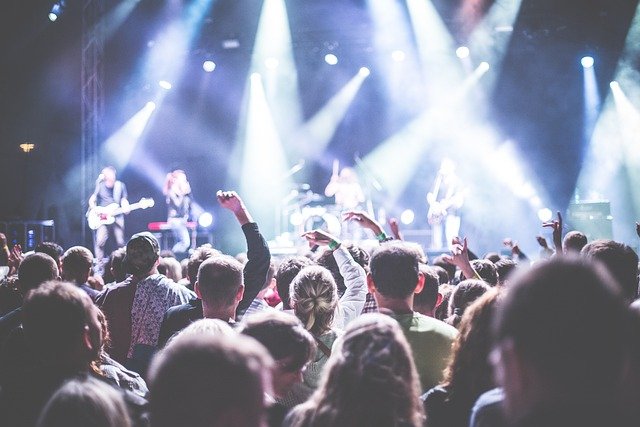Sonic Solidarity: The Rise of Intergenerational Music Festivals
In a world often divided by age, a new cultural phenomenon is bridging generations through the universal language of music. Intergenerational music festivals are emerging as powerful catalysts for social connection, challenging age-old stereotypes and reshaping how we view musical experiences. These events are not just about entertainment; they're fostering understanding, respect, and unity across age groups in unprecedented ways.

As these events evolved, they became increasingly age-segregated, catering to specific demographics and musical tastes. This segmentation, while effective for targeted marketing, inadvertently reinforced generational divides and limited cross-age interactions in musical spaces.
The Emergence of Intergenerational Festivals
The concept of intergenerational music festivals began to gain traction in the early 2010s as event organizers recognized the untapped potential of diverse age demographics. Pioneers in this space sought to create environments where grandparents, parents, and children could all find common ground through shared musical experiences.
These festivals distinguish themselves by curating lineups that span decades of musical history, featuring artists from various eras and genres. From classic rock legends to contemporary pop stars, the stages become a melting pot of musical heritage and innovation.
Breaking Down Age Barriers
At the heart of intergenerational festivals lies the power to dismantle age-related stereotypes and prejudices. Sociological studies have shown that meaningful interactions between different age groups can significantly reduce ageism and promote mutual understanding.
Dr. Emily Thornton, a social psychologist specializing in intergenerational dynamics, notes, “When people of different ages come together in a joyful, music-filled environment, they often discover shared interests and values that transcend generational boundaries. This can lead to more empathetic and cohesive communities.”
The Social Impact of Shared Musical Experiences
The effects of intergenerational music festivals extend far beyond the event grounds. Attendees report lasting changes in their perceptions of other age groups and an increased willingness to engage in cross-generational activities in their daily lives.
Research conducted by the Institute for Social Harmony found that participants in intergenerational festivals were 40% more likely to volunteer for community projects involving diverse age groups and 60% more likely to seek out mentorship relationships with individuals from different generations.
Cultural Exchange and Heritage Preservation
These festivals serve as living museums of musical history, allowing younger generations to experience the sounds that shaped their parents’ and grandparents’ lives. Simultaneously, older attendees gain exposure to contemporary artists, keeping them connected to evolving cultural trends.
This exchange is not just about music; it’s about sharing stories, experiences, and perspectives. Many festivals now incorporate storytelling sessions, where older attendees can share their memories associated with certain songs or eras, creating a rich tapestry of oral history.
Challenges and Considerations
While the concept of intergenerational music festivals is promising, it’s not without challenges. Organizers must navigate diverse needs and preferences, from accessibility concerns for older attendees to ensuring a safe and engaging environment for families with young children.
Additionally, there’s the delicate balance of curating a lineup that genuinely appeals across generations without falling into the trap of tokenism or stereotyping. Success lies in authentic representation and a deep understanding of musical heritage and contemporary tastes.
The Future of Intergenerational Music Experiences
As society continues to grapple with issues of division and disconnection, intergenerational music festivals offer a blueprint for fostering unity through shared cultural experiences. The model is already inspiring similar initiatives in other areas, from art exhibitions to sporting events.
Looking ahead, experts predict a continued growth in these cross-generational events, with technology playing an increasing role in bridging age gaps. Virtual reality experiences, for instance, could allow immobile seniors to “attend” festivals alongside their younger family members.
Conclusion: Harmony Across Ages
Intergenerational music festivals represent more than just a trend in event planning; they’re a powerful social movement fostering understanding, respect, and connection across age divides. By creating spaces where the rhythm of life is shared across generations, these events are composing a new social symphony—one where every age group has a vital part to play.
As we move forward, the lessons learned from these festivals may well inform broader strategies for social cohesion and intergenerational solidarity. In a world that often seems fragmented, the power of music to unite across ages offers a hopeful melody for our collective future.





